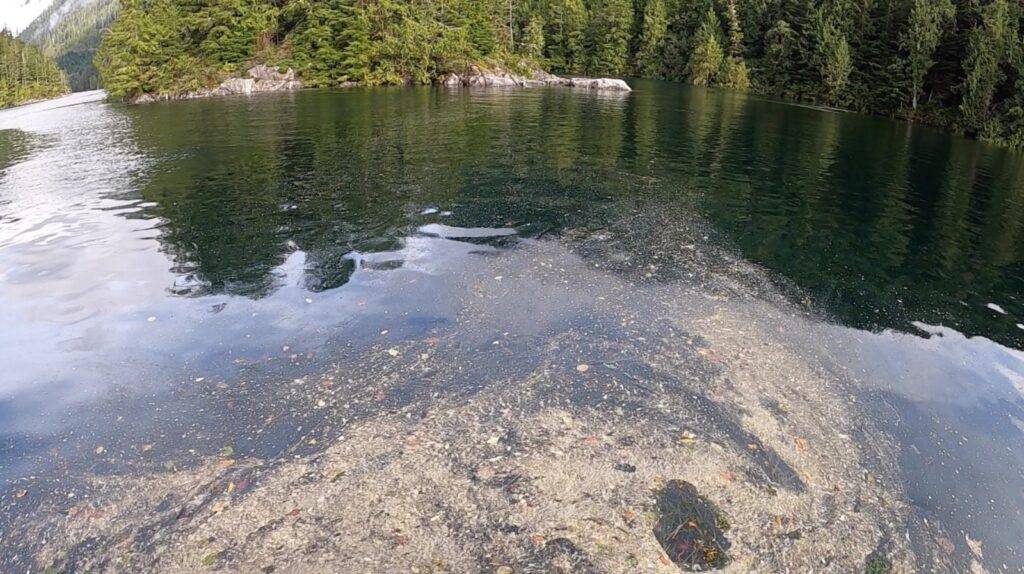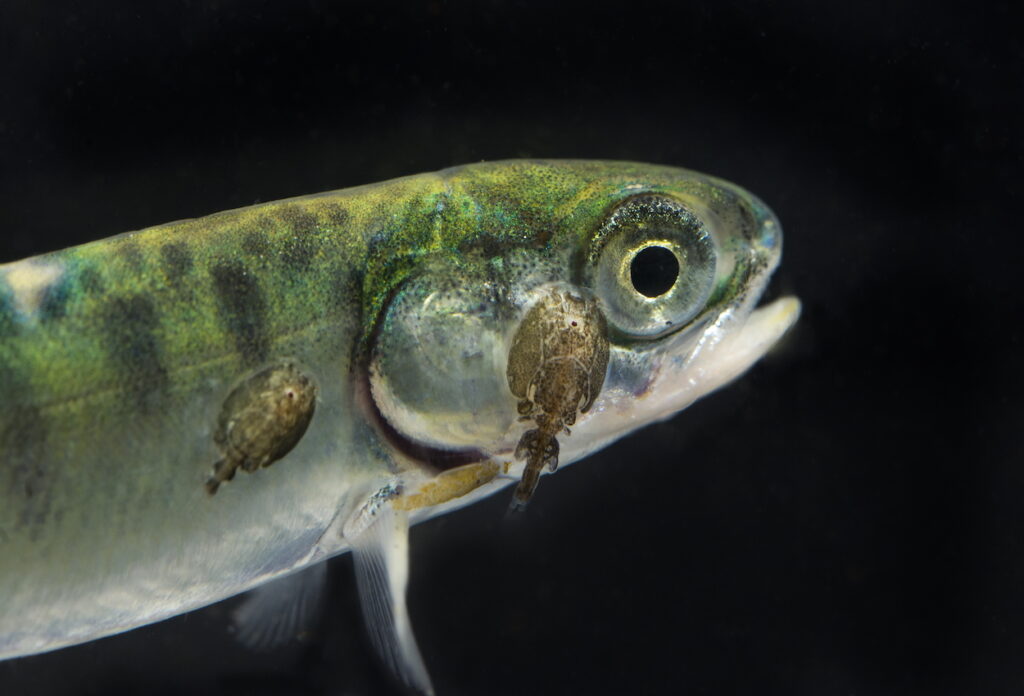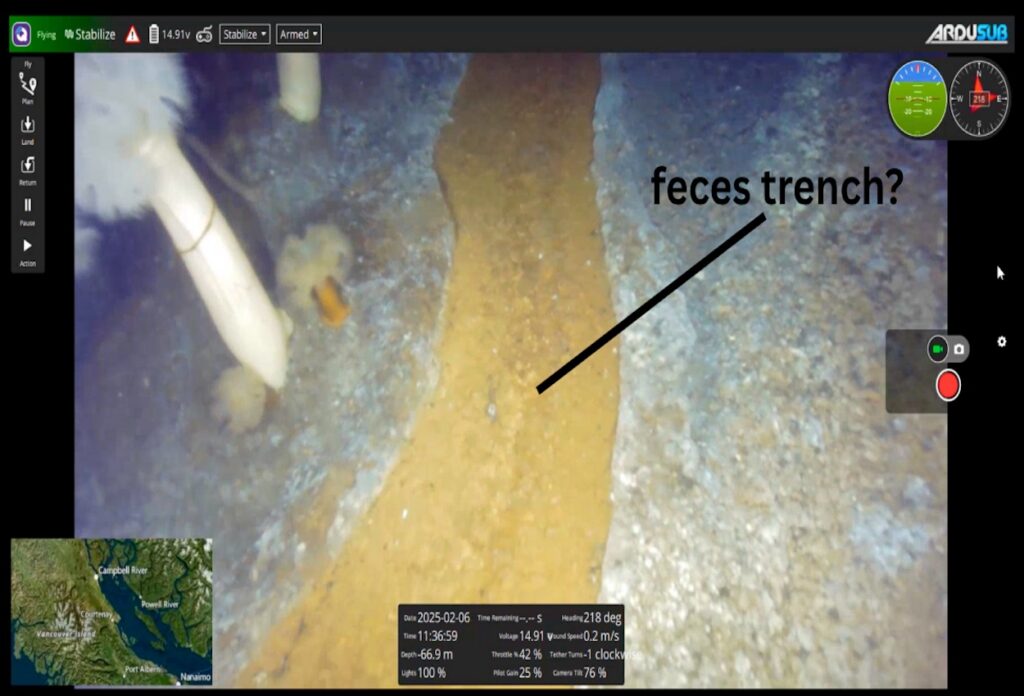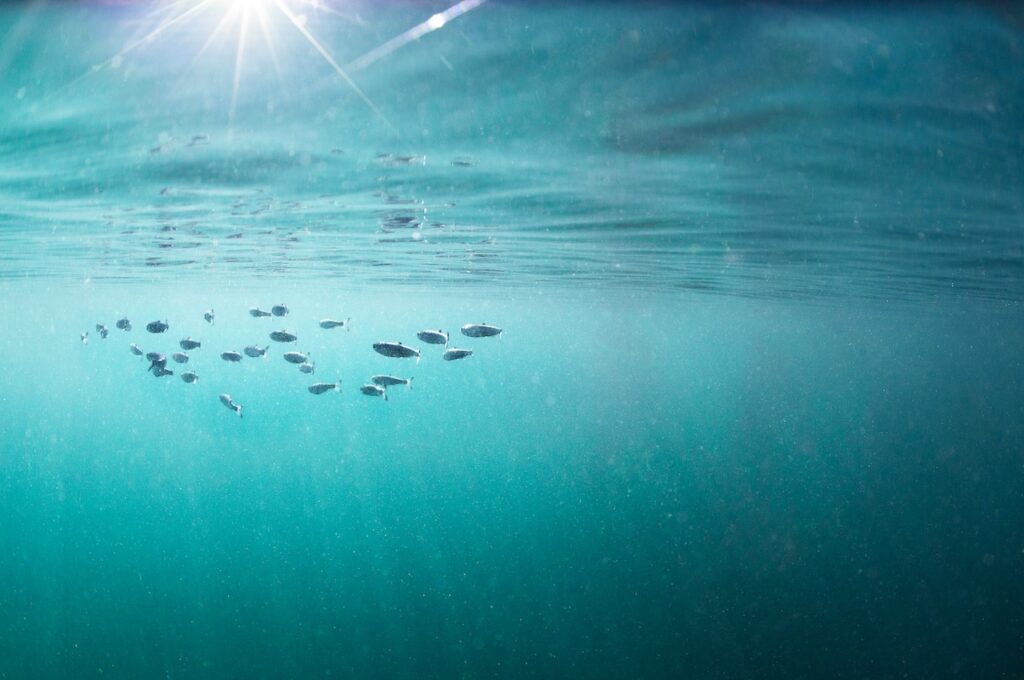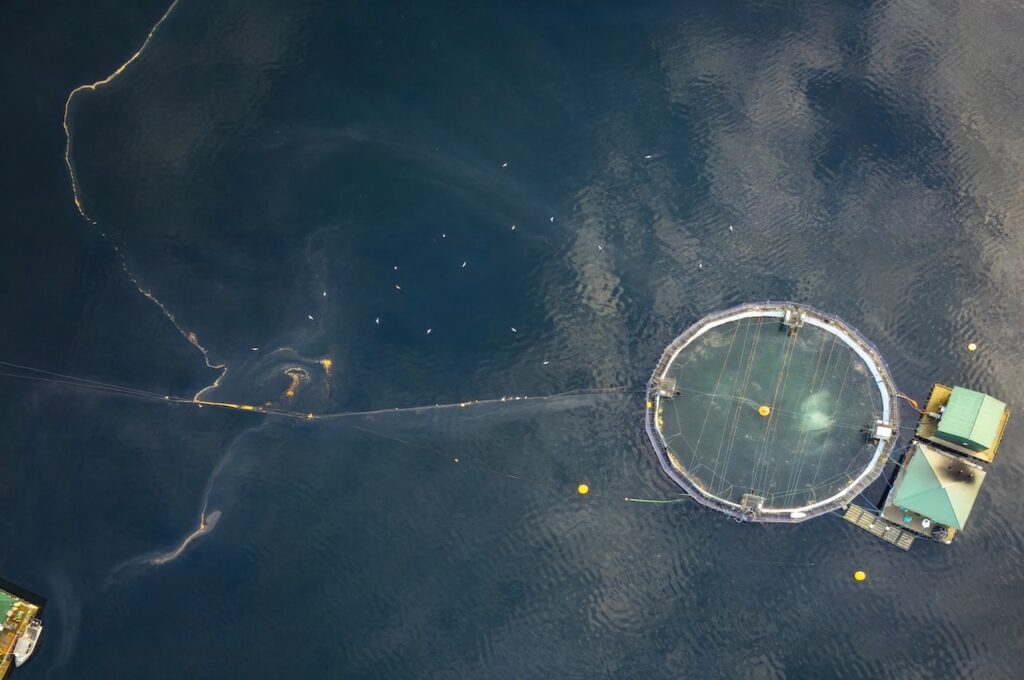The smokey brown orange haze from this fall’s wildfires cast an apocalyptic hue over Cermaq’s Clayoquot Sound operations. In Tofino we track the vehicles; leaving town are semi-trailer after semi-trailer of finished product shipping out, and trailer after trailer of dead fish (morts). Coming into town are chemical trucks and trailers laden with juvenile salmon (smolts). It seems the company deals in death as much as food production. But what happens when the trucks are loaded on barges and head out into the Sound?
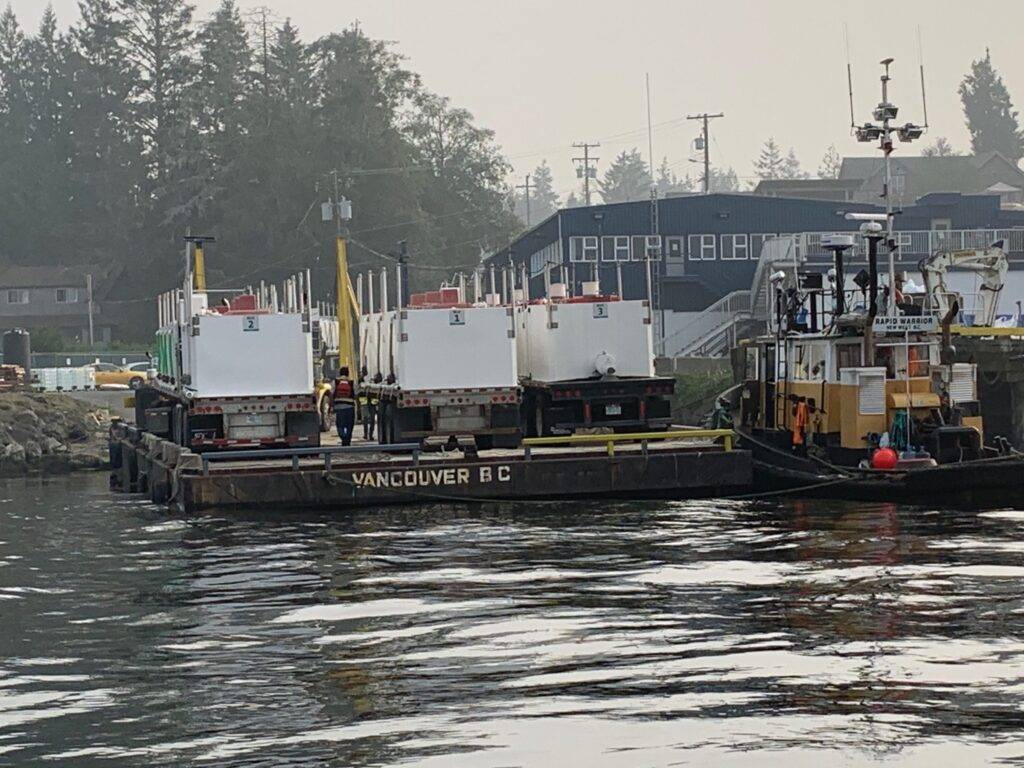
That’s what our salmon farm watch dog program (Clayoquot Salmon Investigation—CSI), is here to find out. Here’s some notes from the field…
Lennie John from Ahousaht First Nation met us in Tofino and we headed north. Norwegian fish farm giant Cermaq is installing an experimental production system at one of their existing sites. This site in Millar Channel has long been plagued with mass die-offs, sea lice epidemic and disease. It is located on a wild salmon migration highway across the channel from the Atleo River, an important salmon river in Ahousaht Territory. The bag system is designed to protect Cermaq’s farmed fish from the very marine impacts their practices cause. The Semi-Closed Containment System (SCCS) will pump sea water in for fish rearing, and then back out, unfiltered—the volume of an Olympic-sized swimming pool every 8 minutes. Spewing sewage and pathogens into the ocean—just like an open-net pen salmon farm.
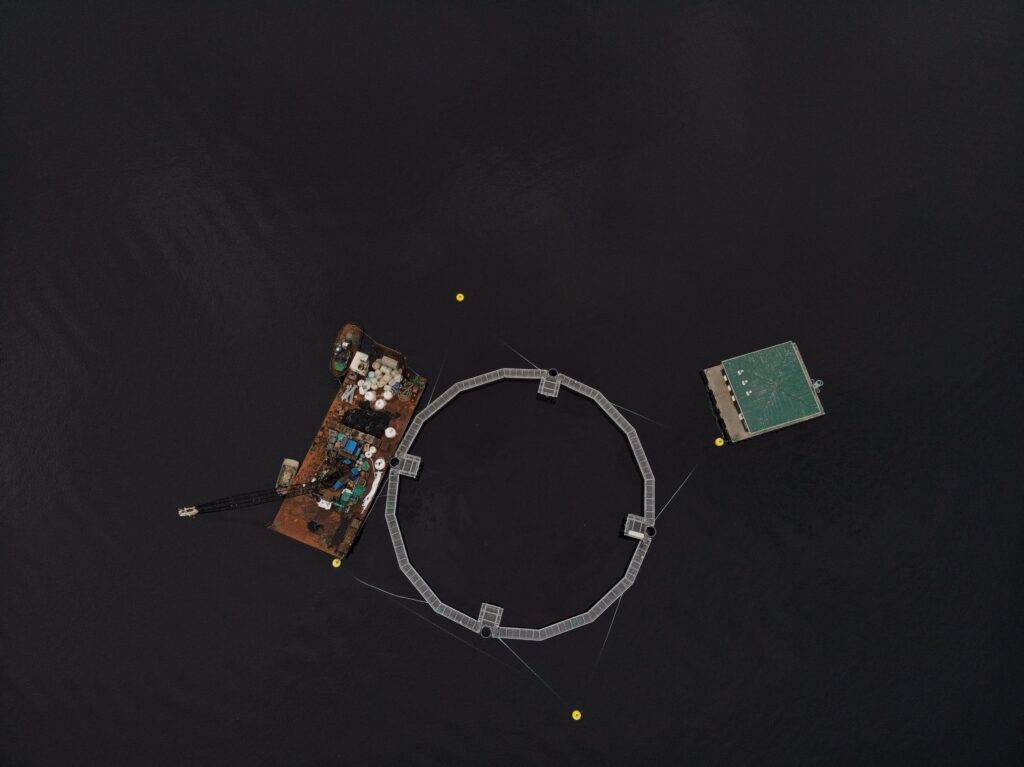
Cermaq’s new Semi-Closed Containment System was to replace the old open net-pen farm at the site. However, while on a CSI field trip, we happened to arrive at the Millar site just as a tug boat was towing in a new open-net pen structure.
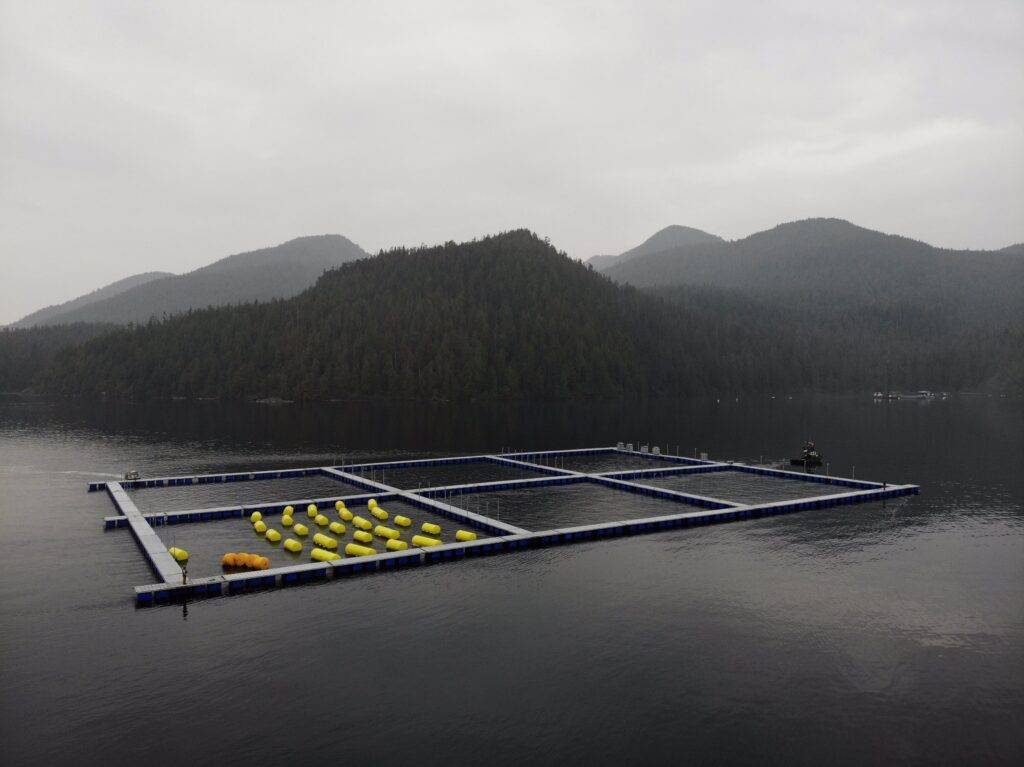
At the next site, Ross Passage, Cermaq is putting a new cohort of juvenile fish (smolts) into the feedlot. We got out the sampling nets and scooped up some tiny fish scales that had come off the smolts during transfer. These will be sent to the lab to test for the the deadly Atlantic piscine orthoreovirus (PRV).
As we rounded Saranac Island, a barge with two mort trailers was pulling away from the Saranac fish farm. A sure sign that a mass die-off is in progress. The stench hits us as we take in the scene and see a slick of fat, with blobs like cotton balls drifting out with the tidal current. Time for another sample! This time we put on the latex gloves, the stink of decomposed farmed salmon is not a smell that is easy to wash off.
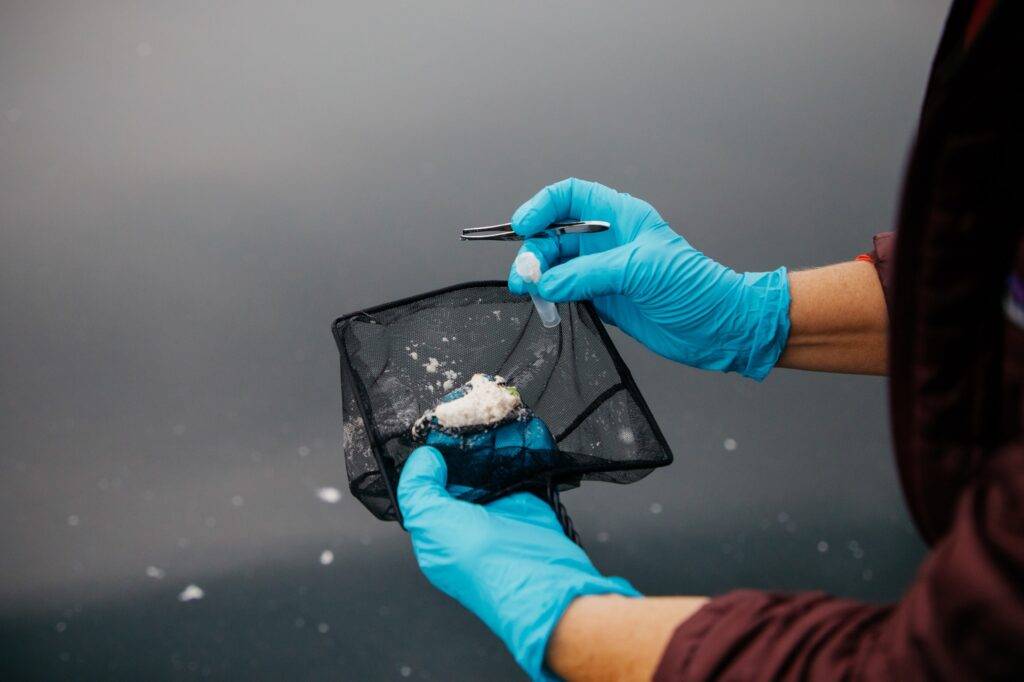
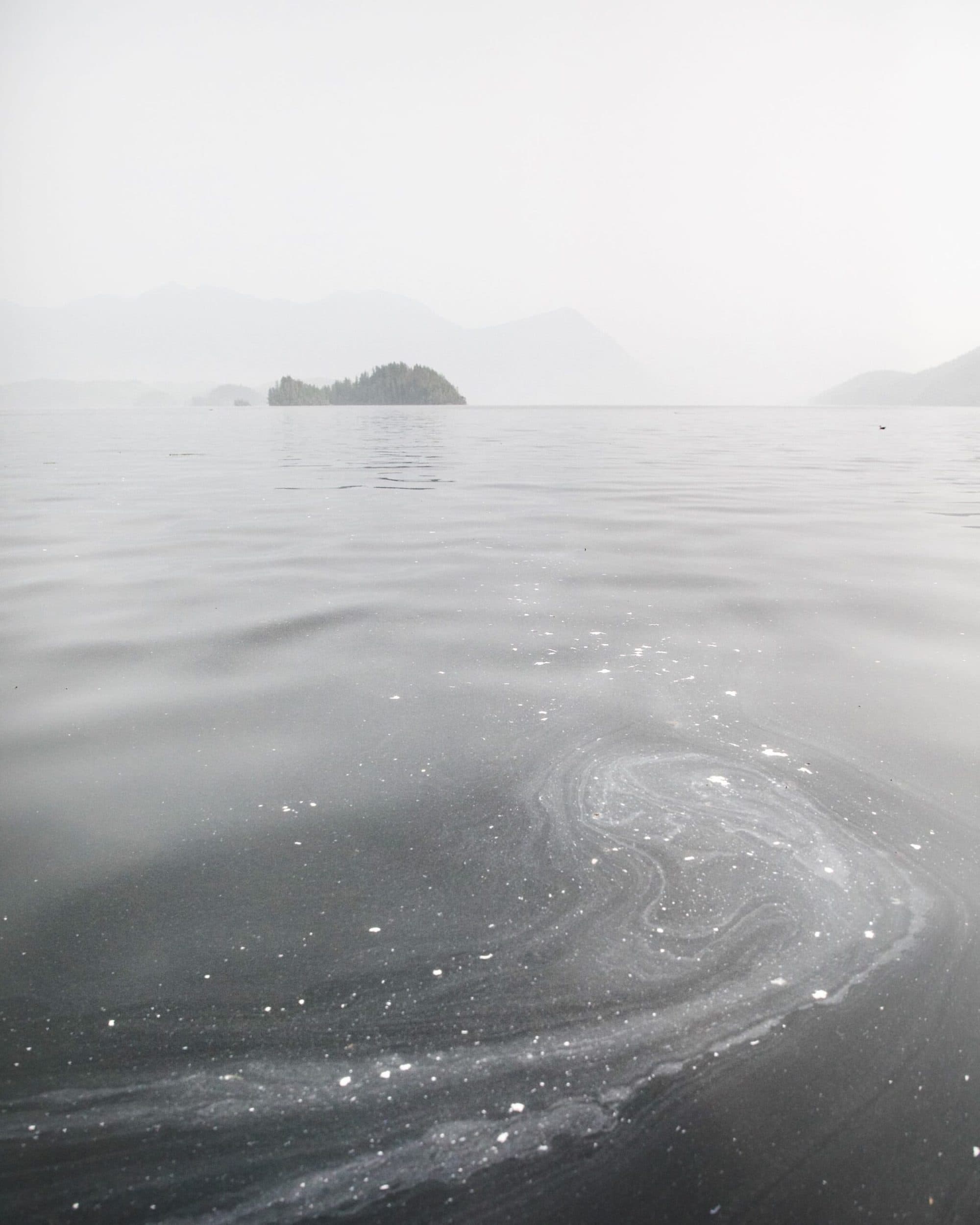
Back in Tofino over the next days, mort trailers continue to roll through town in a steady stream. So the CSI crew headed back out to investigate further.
We headed up Bedwell Inlet, where Cermaq has a high concentration of fish farms. At the Westside site, we came upon the mort barge and what looked like two dive teams working inside the pens.
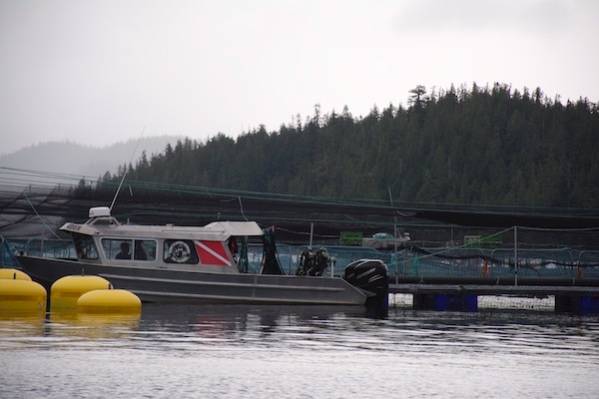
But the scene lacks the graphic drama of last year’s mass die-off, when Cermaq’s staff had to toss over 200,000 dead salmon into blue fish totes, which were lifted and dumped into the mort trailers.
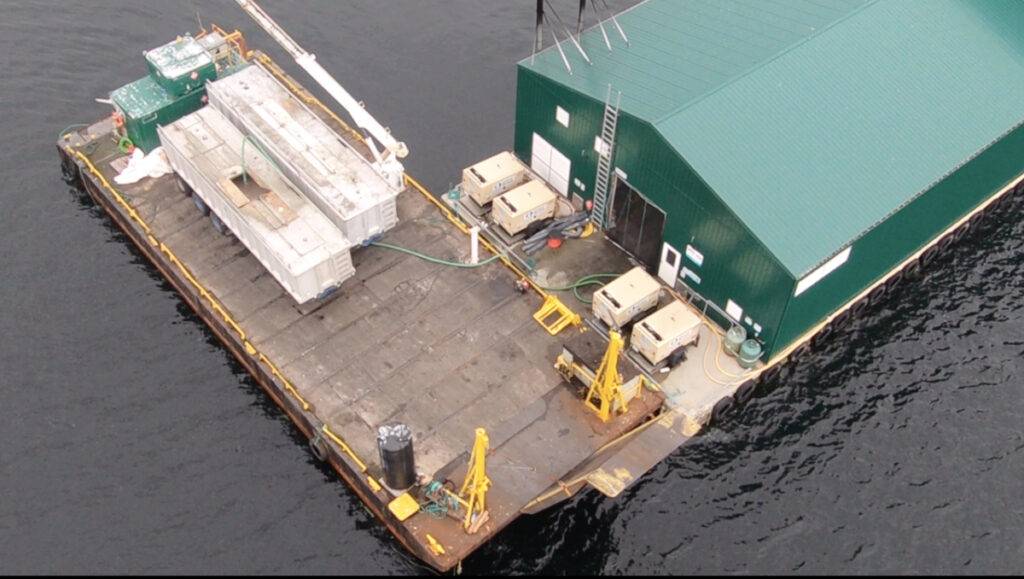
With the new system, divers feed the dead fish into large tubes, which move the fish into the building where staff monitor them sliding by. Inside the building, the fish are ground into a slurry and pumped through a hose into the mort trailer. Although less graphic and more automated, these mass die-off events still pollute the marine environment and spread viruses. While at Westside we saw fish in the pens at the surface, hardly moving, noses pointed into the net—a symptom of PRV.

We saw evidence of die-offs at four of Cermaq’s farms. At the Fortune Channel site the dead fish waste had produced a large fat slick. As all but one of Cermaq’s farms tested positive for PRV in our Going Viral study, it’s gravely concerning to think these farmed fish could be experiencing a viral outbreak which is weakening (and maybe killing?) them. An infected farm can release 65 billion viral particles an hour. This farm site is near the Bulson River watershed on a wild salmon migration route.
Our crew headed back to Tofino, shaking our heads at the insanity of allowing this polluting industry in the waters of a globally rare ecosystem—Clayoquot Sound.
Bonny Glambeck is Campaigns Director of Clayoquot Action.
